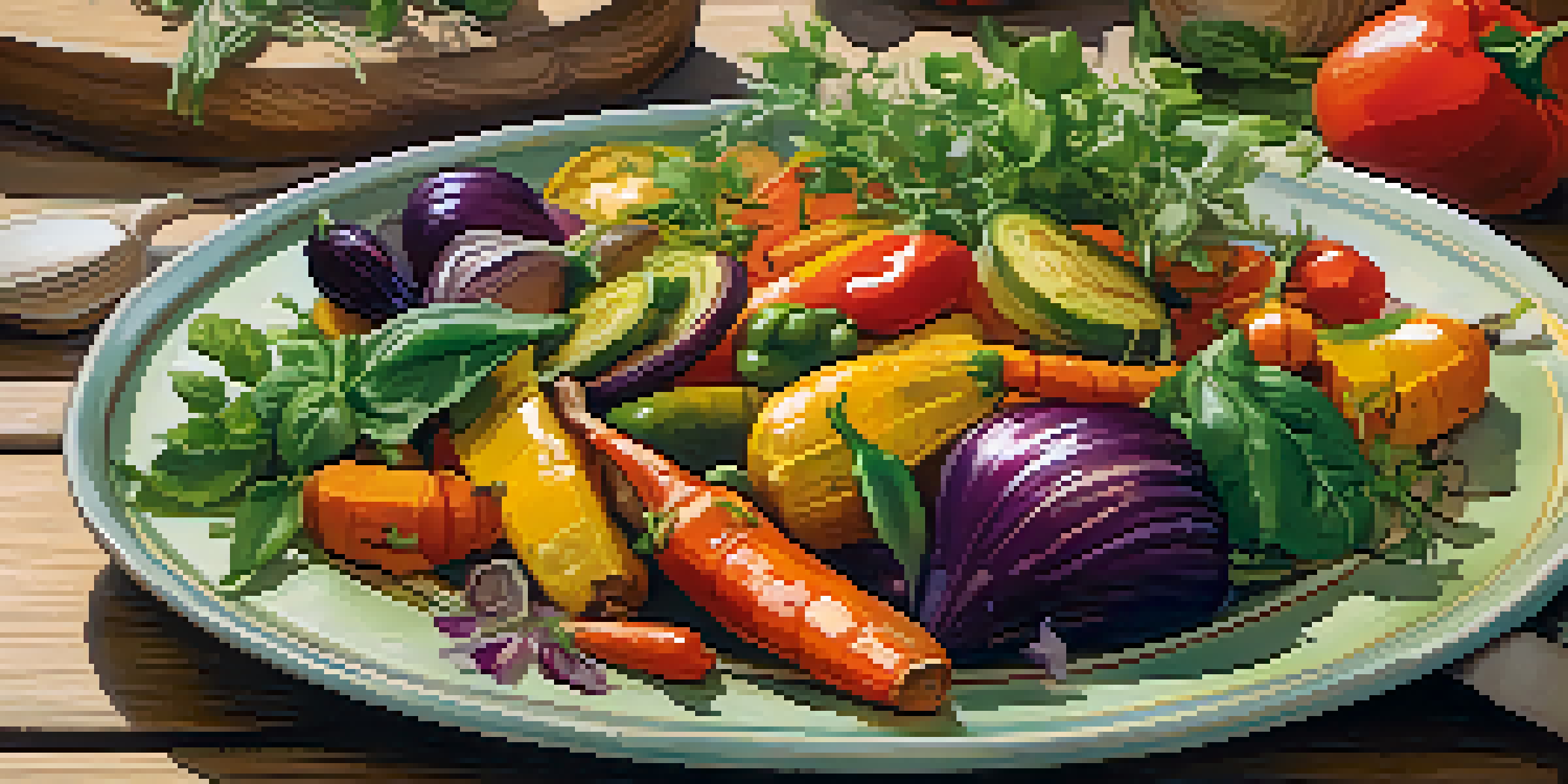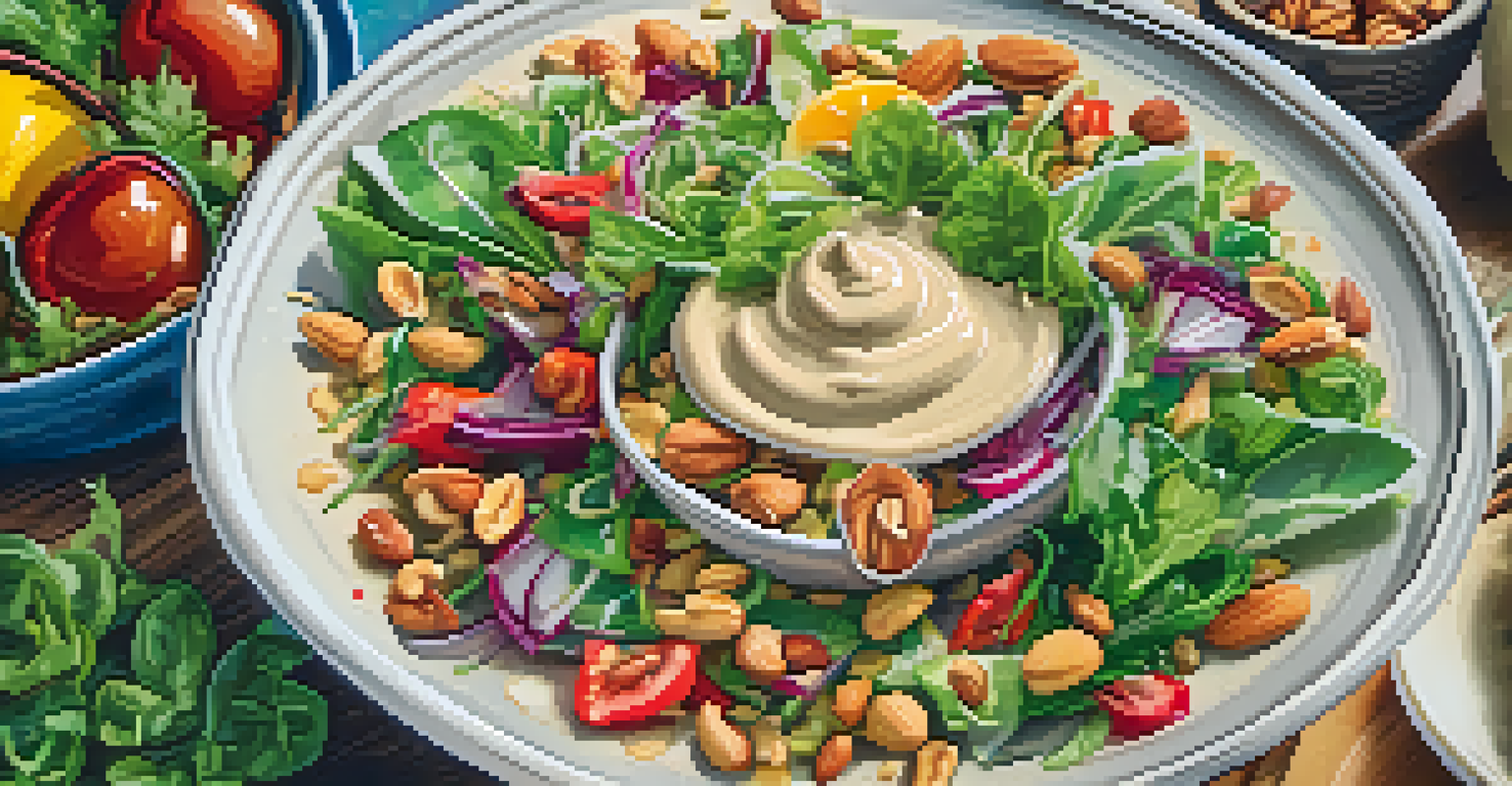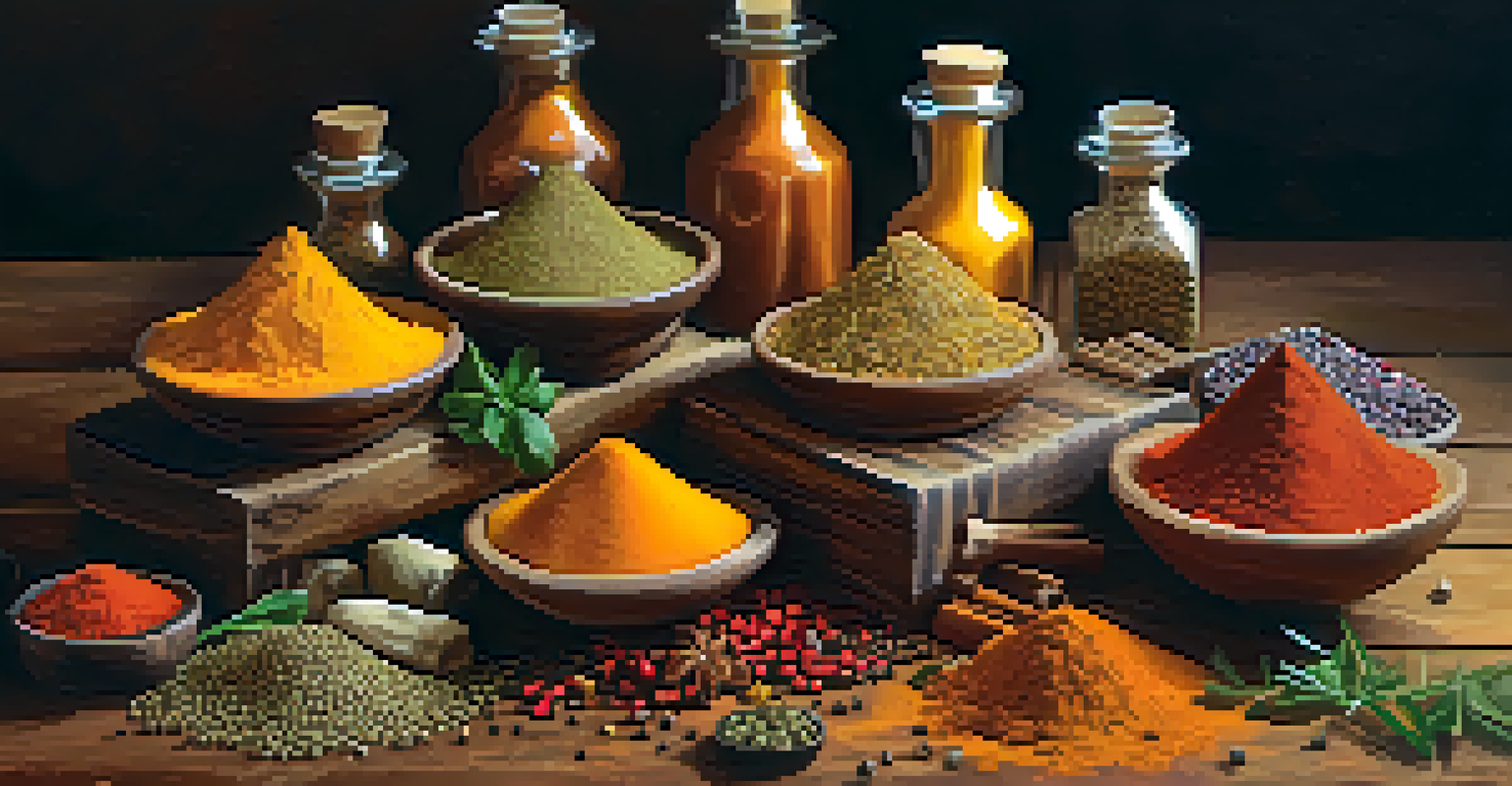Innovative Vegan Cooking: Techniques for Creative Recipes

Embracing Plant-Based Ingredients for Flavor
When it comes to innovative vegan cooking, the ingredients you choose can make all the difference. Embracing a variety of plant-based ingredients, such as mushrooms, nuts, and legumes, can elevate your dishes from ordinary to extraordinary. These ingredients not only offer rich flavors but also add texture and heartiness to your meals.
Cooking is like love. It should be entered into with abandon or not at all.
For example, using smoked paprika can infuse a dish with a savory depth that rivals traditional meats. Experimenting with different herbs and spices can also open up a world of flavor profiles that are both exciting and satisfying. Remember, the key is to not shy away from bold flavors; they are your allies in the kitchen!
Incorporating seasonal vegetables into your meals can also enhance the freshness and brightness of your dishes. Think of vibrant farmers' market produce to inspire creativity in your cooking. By focusing on quality ingredients, you set the foundation for truly innovative vegan recipes.
Mastering Cooking Techniques for Texture
Texture plays a crucial role in making vegan dishes enjoyable and satisfying. By mastering techniques like roasting, grilling, and sautéing, you can transform familiar ingredients into delightful textures that excite the palate. For instance, roasting vegetables caramelizes their natural sugars, resulting in a sweet and crunchy bite.

Another technique to consider is marinating. Marinating tofu or tempeh can infuse them with flavors and create a more appealing texture, making them perfect for stir-fries or sandwiches. Similarly, grilling vegetables can enhance their smoky flavor while maintaining a delightful crunch.
Flavor from Plant-Based Ingredients
Using diverse plant-based ingredients like mushrooms, nuts, and legumes can transform ordinary dishes into extraordinary culinary experiences.
Don’t forget about the power of blending and pureeing! Turning nuts into creamy sauces or soups can add a luxurious texture to your dishes. This versatility allows you to play with different textures, making your vegan creations not only flavorful but also visually appealing.
Utilizing Fermentation for Bold Flavors
Fermentation is a fascinating technique that can add complexity and depth to your vegan cooking. By fermenting ingredients like vegetables or legumes, you create tangy, umami-rich flavors that can elevate any dish. Think of kimchi or sauerkraut as vibrant side dishes that can awaken your taste buds and provide a health boost.
Food is not just fuel; it's information. It talks to your DNA and tells it what to do.
Incorporating fermented ingredients into your recipes can be as simple as adding a spoonful of miso to a soup or using yogurt made from nuts as a base for dressings. These ingredients not only enhance flavor but also introduce beneficial probiotics into your diet. It's a win-win for your taste buds and gut health!
Experimenting with homemade ferments, like pickled vegetables or fermented hot sauces, allows you to personalize your flavors even further. The beauty of fermentation is that it encourages creativity and experimentation; you can discover unique flavor combinations that are entirely your own.
Creative Substitutions for Traditional Ingredients
Innovative vegan cooking often involves reimagining traditional recipes with creative substitutions. Instead of using eggs, consider alternatives like flaxseed meal or aquafaba (the liquid from canned chickpeas) to achieve similar textures in baking. These substitutes not only maintain the integrity of the dish but can also introduce new flavors.
Additionally, using nut-based cheeses can replicate the taste and texture of dairy cheese, making it easier to enjoy familiar dishes without the animal products. There are endless possibilities for creating creamy sauces or spreads using cashews or almonds as a base.
Mastering Techniques for Texture
Employing cooking techniques such as roasting and marinating can enhance the texture and enjoyment of vegan meals.
Don’t be afraid to think outside the box! For instance, using cauliflower rice instead of traditional rice can lower carbs while providing a satisfying texture. The key is to experiment and find substitutions that resonate with your palate, allowing you to enjoy your favorite dishes in a whole new way.
Exploring Global Flavors in Vegan Cuisine
One of the joys of cooking is exploring different cultures through their cuisines. Vegan cooking is no exception, as global flavors can inspire innovative dishes that celebrate diverse ingredients and cooking techniques. From Thai curry to Mexican tacos, there’s a world of flavors waiting for you to explore.
By incorporating spices and traditional methods from different cultures, you can create vegan versions of classic dishes that are both unique and delicious. For example, using coconut milk in a curry can provide a rich, creamy base that enhances the overall dish without any animal products.
Additionally, experimenting with international staples like lentils, chickpeas, and grains can introduce new textures and flavors to your meals. The beauty of global cuisine is that it encourages creativity and can lead to delightful culinary discoveries in your own kitchen.
Presentation: Making Vegan Dishes Visually Stunning
In addition to taste, presentation plays a significant role in how we experience food. Innovative vegan cooking can shine through not only in flavors but also in the way dishes are plated. Consider using colorful ingredients to create visually appealing meals that are as delightful to look at as they are to eat.
For instance, arranging vibrant roasted vegetables in a rainbow pattern or garnishing with fresh herbs can elevate a simple dish into a feast for the eyes. Don’t underestimate the power of textures; combining creamy sauces with crunchy toppings can create an exciting visual contrast.
Creativity in Substitutions
Reimagining traditional recipes with creative substitutions allows for a delightful exploration of flavors while maintaining familiar textures.
Remember, we eat with our eyes first! Taking the time to present your dishes thoughtfully can enhance the overall dining experience, making each meal feel special and inviting. It encourages others to appreciate the beauty of plant-based cooking and can inspire them to explore it themselves.
The Joy of Experimentation in Vegan Cooking
At the heart of innovative vegan cooking is a spirit of experimentation. Embracing a trial-and-error approach allows you to discover new flavors and techniques that can redefine your cooking style. Don’t be afraid to tweak recipes or invent your own; some of the best culinary creations come from spontaneous ideas.
For example, if you’re curious about how a particular spice might enhance a dish, try it out! You might find that a pinch of cinnamon adds warmth to a savory stew, or a dash of chili powder brings a delightful kick to a salad. The more you experiment, the more you’ll find what works for your palate.

Remember, cooking is about having fun and expressing creativity. Each new dish you try is an opportunity to learn something new, whether it’s a cooking technique or a flavor combination you love. Embrace the joy of cooking and let it inspire your innovative vegan journey!